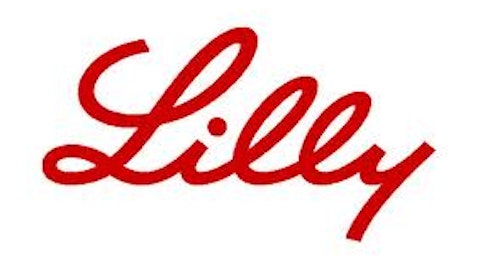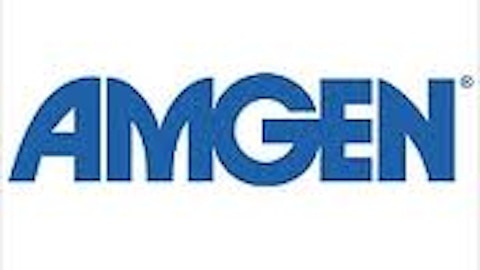
Keeping with the spirit of the upcoming NFL draft, I thought it would be a fun exercise to essentially “draft” the perfect biotech company. What I intend to do is break the biotech sector into three basic components — the CEO position, the lead drug, and the blockbuster pipeline candidate — and select what I feel would be an all-star biotechnology company.
The CEO
The success of a biotech company all begins with its leader. A biotech CEO is the person who’s ultimately responsible for the success of a company’s pipeline and the launch of any drugs approved by the Food and Drug Administration. In this category, there isn’t a CEO that I’d rather have leading my biotech dream team than Biogen Idec Inc. (NASDAQ:BIIB)‘s George Scangos.
Scangos has been an absolute mastermind at the helm of Biogen Idec Inc. (NASDAQ:BIIB), delivering shareholders a 213% return over the past five years, with his strategy taking on many different forms. First, Scangos has worked to expand the indications for Rituxan, its shared cancer drug with Roche, in non-Hodgkin lymphoma. With peak sales forecast to top more than $7 billion in 2015, Rituxan has been instrumental in putting Biogen Idec Inc. (NASDAQ:BIIB) on the map.
In addition, Scangos orchestrated a $3.25 billion all-cash purchase of the full global rights to Tysabri from Elan, whom it had previously shared revenue down the middle with. Given the approval of oral, twice-daily Tecfidera as a first-line treatment for relapsing multiple sclerosis — which reduced MS relapses by an impressive 49% in trials — last month, Biogen Idec Inc. (NASDAQ:BIIB) added to its already existing lineup of Tysabri and Avonex, and cemented its position as a leader among MS therapies. Also, with Teva Pharmaceutical Industries Ltd (ADR) (NYSE:TEVA) facing the loss of its lead MS-drug Copaxone to patent exclusivity by September 2015, Biogen Idec Inc. (NASDAQ:BIIB)’s lead position in MS therapies has added long-term security and potential.
The lead drug
This is actually the most difficult choice because there are so many top-performing lead drug candidates. In deciding which one to choose I focused on a mixture of total sales potential, time until patent expiration, as well as the potential for indication expansion. I narrowed it down to two lead drug candidates: Celgene Corporation (NASDAQ:CELG)‘s Revlimid and Regeneron Pharmaceuticals Inc (NASDAQ:REGN)‘ Eylea.
Celgene Corporation (NASDAQ:CELG)’s Revlimid would definitely seem like a logical choice. The anti-cancer drug — which is a second-line multiple myeloma treatment and is also indicated for treating patients with transfusion-dependent anemia associated with myelodysplastic syndrome – saw sales rise 17% to $3.77 billion in 2012. Further, Revlimid’s patents won’t fully expire until 2019, and it’s being tested as a possible treatment for relapsed and refractory mantle cell lymphoma.
Regeneron Pharmaceuticals Inc (NASDAQ:REGN)’ Eylea is approved in the U.S. as a treatment for wet age-related macular degeneration and for macular edema following central retinal vein occlusion. Last year, sales of the drug catapulted to $838 million in the U.S., with the company projecting U.S. sales growth 43% to 52% this year. This doesn’t even take into account that Eylea was approved in Europe for wet-AMD in November and sales in that region are expected to add to already robust U.S. sales.
After carefully considering the equally strong prospects for both companies, I’d select Eylea to my biotech dream team. There are two primary reasons why Eylea seems like a smarter choice than Revlimid. First, Eylea’s patent expirations are all the way out into next decade, so you have an even longer worry-free time for Eylea to outperform.
Second, Revlimid’s multiple myeloma market may shrink as cancer medications improve, competition picks up, and cancer awareness/education improves. In contrast, wet-AMD is an age-related disease that’s only bound to increase as Baby Boomers age. As we’ve witnessed from Eylea’s results as compared to Novartis AG (ADR) (NYSE:NVS) and Roche’s Lucentis, Eylea isn’t taking market share away from its peers so much as the market is expanding to accommodate new treatments. This is especially encouraging since Eylea undercuts Lucentis in price (albeit marginally) and Roche is unlikely to seek wet-AMD approval for Avastin (Avastin is occasionally prescribed to treat wet-AMD even though it’s not indicated to treat wet-AMD) even if it’s markedly cheaper than Eylea, for fear of cannibalizing Lucentis’ sales. There’s simply nothing that even comes close to competing with Eylea.
The pipeline candidate
As we witnessed with lead drug candidates, there are a slew of pipeline candidates that would make a lot of sense.
You could take a gamble on Pharmacyclics‘ rare blood cancer drug ibrutinib, which has peak sales potential of around $5 billion and delivered incredible response rates in mantle cell lymphoma mid-stage trials. Another strong possibility is Pfizer Inc. (NYSE:PFE)‘s palbociclib — which, when combined with Novartis’ Femara in mid-stage trials, more than tripled progression-free survival for metastatic breast cancer patients’ to 26.1 months from just 7.5 months on Femara alone.
While a solid argument could be made for either, I’m going to put my chips behind Gilead Sciences, Inc. (NASDAQ:GILD) oral hepatitis-C drug sofosbuvir. In four late-stage trials, sofosbuvir demonstrated efficacy far beyond that of the placebo; in some cases removing all traceable levels of HCV in patients four weeks after dosing was complete in 100% of the patient pool. Sofosbuvir is also a prime candidate to be combined with other hep-C drug hopefuls, creating a wide moat of potential treatment options should other oral candidate make it to approval.
Perhaps the most intriguing aspect of sofosbuvir is the huge patient pool that it would benefit. According to the Centers for Disease Control and Prevention, there are 3.2 million people in the U.S. with hepatitis C, and many don’t even know they have the disease. Sofosbuvir, an oral medication, looks to drastically reduce the flu-like symptoms often associated with interferon injections seen in the current standard of treatment, while also delivering better efficacy. Wall Street anticipates peak sales of sofosbuvir could be around $3.8 billion, but I suspect it could be much higher.
My perfect biotech company
To recap, if I had my pick of the litter and could draft my biotech dream team, it would entail having Biogen Idec Inc. (NASDAQ:BIIB)’s George Scangos at CEO, relying on Regeneron’s Eylea to drive near-term and long-term stability, and having Gilead Sciences, Inc. (NASDAQ:GILD)’s Sofosbuvir provide the long-term growth boost.
What would be your so-called “perfect biotech?” Share your big three in the comments section below.
The article This Is What the Perfect Biotech Would Look Like originally appeared on Fool.com and is written by Sean Williams.
Fool contributor Sean Williams has no material interest in any companies mentioned in this article. You can follow him on CAPS under the screen name TMFUltraLong, track every pick he makes under the screen name TrackUltraLong, and check him out on Twitter, where he goes by the handle @TMFUltraLong.The Motley Fool recommends Gilead Sciences.
Copyright © 1995 – 2013 The Motley Fool, LLC. All rights reserved. The Motley Fool has a disclosure policy.

